 Kyulux, established in Japan in 2015, develops next generation materials for OLED displays and lighting.
Kyulux, established in Japan in 2015, develops next generation materials for OLED displays and lighting.
Based on exclusively-licensed technology from Kyushu University, Kyulux develops 4th-generation Hyperfluorescence TADF emitters that enable cost-effective, durable and efficient OLEDs that do not rely on rare metals. Kyulux is developing red, green, yellow and blue HF emitter systems.
In 2016 Kyulux raised $13.5 million from Samsung, LG, Japan Display, JOLED and more, and in 2019 the company announced it raised $31.8 million in its Series B round.
In October 2019 Wisechip launched the world's first Hyperfluorescence TADF OLED display, a 2.7" yellow PMOLED that adopts Kyulux's HF emitter system. Kyulux started shipping commercial TADF materials for Wisechip in April 2020.
4-1 Kyudai-Shinmachi, Nishi-ku
Fukuoka Industry-Academia Symphonicity (FiaS) Bldg.2
Fukuoka,
819-0388
Japan
Kyulux updates on its latest Hyperfluorescence TADF emitter performance
Kyulux presented a new paper at SID Displayweek, that shows the latest progress of the company's Hyperfluorescence OLED emitter platform. You can see the latest performance chart below.
Hyperfluorescence combines TADF and fluorescence emitters, which enables high-efficiency (~100% IQE) emitters that feature long lifetimes and a very narrow emission spectrum. The company's yellow HF emitter is already commercialized, and now Kyulux says that its red and green materials are "close to commercialization". The company is also improving the color point and lifetime of its HF blue emitters.
A Q&A with Dr. York Tsai, Wisechip's Vice President of R&D
WiseChip Semiconductor, based in Taiwan, is one of the world's leading PMOLED maker (in fact in 2015 Wisechip said it's the world's second largest). Wisechip is developing next-generation PMOLED displays, including flexible panels, transparent panels and Hyperfluorescence/TADF PMOLEDs.
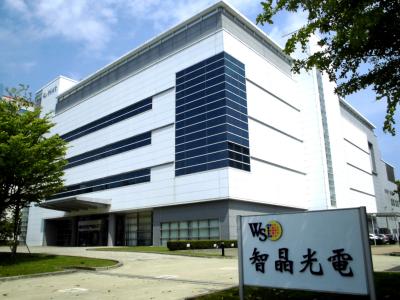
WiseChip recently announced its first, and the world’s first, Hyperfluorescence display, using TADF materials provided by Kyulux. Can you tell some more about this display and its properties?
This 2.70 128x64 product is adopted mostly in industrial products. The size matters in such market but the main problem was to increase the brightness due to the limited efficiency of the fluorescence emitters. The Hyperfluorescence technology helps to settle the problem and can reach up 2.5 times brighter. It performs much better readability so users do not have to stand right in front of the device. This feature adds to the value of the end product.
Kyulux announces first shipment of OLED TADF emitters to Wisechip
TADF emitter developer Kyulux announced that it has shipped the first batch of its yellow TADF emitter to Taiwan's Wisechip to be used it the world's first TADF / Hyperfluorescence display, the 2.7" PMOLED announced in October 2019 - which means that the display will likely start to ship soon.
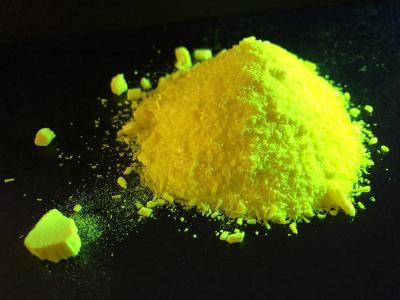
Wisechip's first HF PMOLED is a 2.7" 128x64 monochrome yellow display, that reaches a brightness of 220 nits - 2.5 times brighter than Wisechip's fluorescent yellow PMOLED. The lifetime of this display is 50,000 hours. Wisechip says this display is aimed for the medical, industrial and electronic products markets, and in the future it will launch TADF/HF PMOLEDs for the wearable and consumer electronics markets as well.
TADF OLED emitter technology - industry status
TADF, or Thermally Activated Delayed Fluorescence, is a relatively new class of OLED emitter materials that promise efficient and long-lifetime performance without any heavy metals. TADF research started at around 2012, originally at Kyushu University in Japan and today many academic groups and several commercial companies are developing TADF materials.
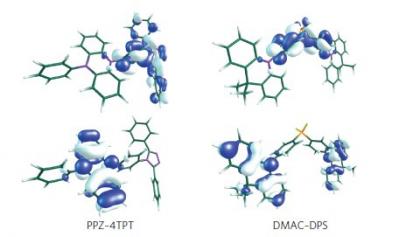
The main reason companies are interested in TADF emission is that it could lead to an efficient and long-lasting blue OLED emitter - something that hasn't been yet achieved by other means (mainly - UDC's Phosphorescent OLED emitter technology). In recent years companies initiated commercial development of red, green and yellow TADF emitters as these can offer a lower cost alternative to UDC's PHOLEDs materials.
Wisechip launches the world's first Hyperfluoresence OLED display - a 2.7" yellow PMOLED
Wisechip announced that it launched the world's first Hyperfluorescence OLED display - a 2.7" monochrome yellow 128x64 PMOLED. The brightness of this display reaches 220 nits - which is 2.5 times the brightness of Wisechip's fluorescent yellow PMOLED. The lifetime of this display is 50,000 hours.
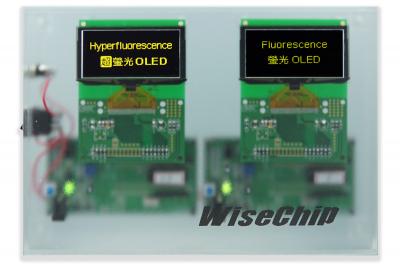
Hyperfluorescence OLED emitters represent the 4th-generation of OLED emitter systems. HF is an actually a system that combines fluorescence emitters (1st-gen) with TADF (3rd-gen) hosts - to achieve a high efficiency , long lifetimes and narrow-spectrum emission.
Kyulux raises $31.8 million in its Series B round
TADF and Hyperfluorescence developer Kyulux announced that it finalized its Series B financing round, having raised ¥1.5 billion ($31.8 million USD) from several companies and VCs. Kyulux says it will use the funds to further accelerate product development and strengthen its IP.
A couple of months ago Kyulux updated on its latest TADF device that achieves 200 hours of lifetime (LT95 at 1000 nits) and an EQE of 22% (at 1000 nits). The color point is 470 nm (which is not deep-blue, note). Kyulux also says that Wisechip is now ready to start producing the yellow HF PMOLED and is seeking customers.
The 2019 International TADF Workshop marks the 10 years since TADF discovery
TADF, or Thermally Activated Delayed Fluorescence, is a relatively new class of OLED emitter materials that promise efficient and long-lifetime performance without any heavy metals. TADF was discovered 10 years ago, and the 4th International TADF Workshop will mark the event.

The TADF Workshop will cover a diverse range of topics in TADF, excitonic materials, physics and devices - including a special focus on device architectures, up-conversion mechanisms, radical (doublet) emitters and perovskite emitters.
Kyulux's CEO shares company updates at OLED Korea 2019
In June 2018 Kyulux and Wisechip unveiled a PMOLED display that uses Kyulux’s Hyperfluorescence yellow emitter. Kyulux updated today that Wisechip is now ready to start producing the HF panel and is seeking customers.
Wisechip eventually settled on a large panel - 73.00 x 41.86 mm (2.7") with a resolution of 128x64. Wisechip says that the power consumption of its HF display is almost half of its regular fluorescent yellow PMOLED.
Things we learned at the first day of OLED Korea 2019
The first day of the OLED Korea 2019 conference is almost over - with some interesting lectures and talks by leading OLED companies and professionals. Here are some of the things under discussion today (highlights only):
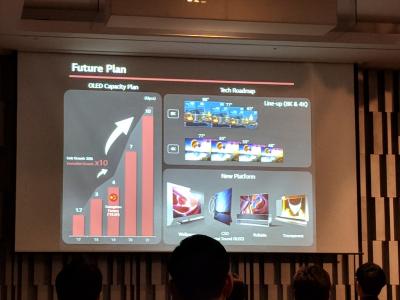
- Some believe there will be a real market for >$2,000 foldable OLED devices, and some call for cost reductions before real adoption could take place
- LG Display is optimistic regarding the future of OLED TVs
- Samsung will not commit yet to its QD-OLED technology
- Both Cynora and Kyulux are rapidly progressing towards a long lasting TADF/HF blue - but it seems there's still work to be done
- Idemitsu Kosan is increasing its fluorescent OLED emitter efficiency
- Universal Display's RGBB architecture is back on the table - and the company now highlights the architecture's low blue light emission. UDC seems more optimistic then ever regarding blue PHOLED commercialization
- Equipment maker's focus is shifting to China as Korean OLED makers will not increase capacity in the near future
Kyulux signs JDA agreements with both SDC and LGD - aims to have commercial ready TADF/HF emitters ready by mid 2019
Kyulux announced that it has signed joint-development agreements (JDAs) with both LG Display and Samsung Display. The LGD agreement was signed in January 2018 while the SDC one was recently signed. Both agreements focus on deep blue Hyperfluoresence / TADF emitters.
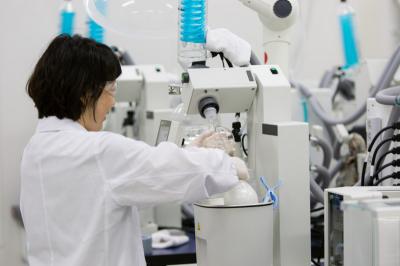
Kyulux hopes that by collaborating with the two leading OLED producers, it will be able to accelerate its material development - and it aims to have commercial red, green and blue HF/TADF emitters ready by mid 2019.
Pagination
- Previous page
- Page 2
- Next page




